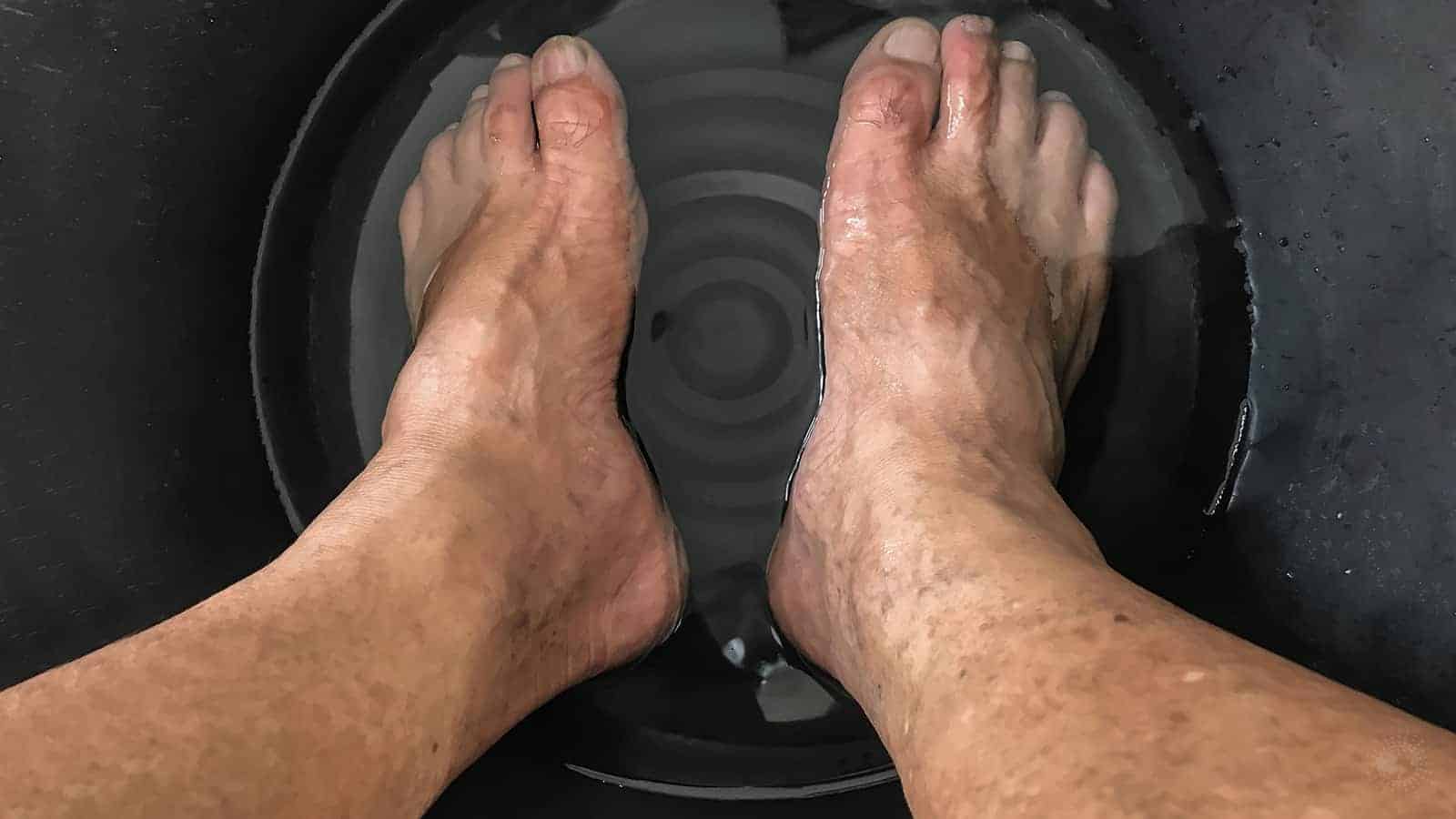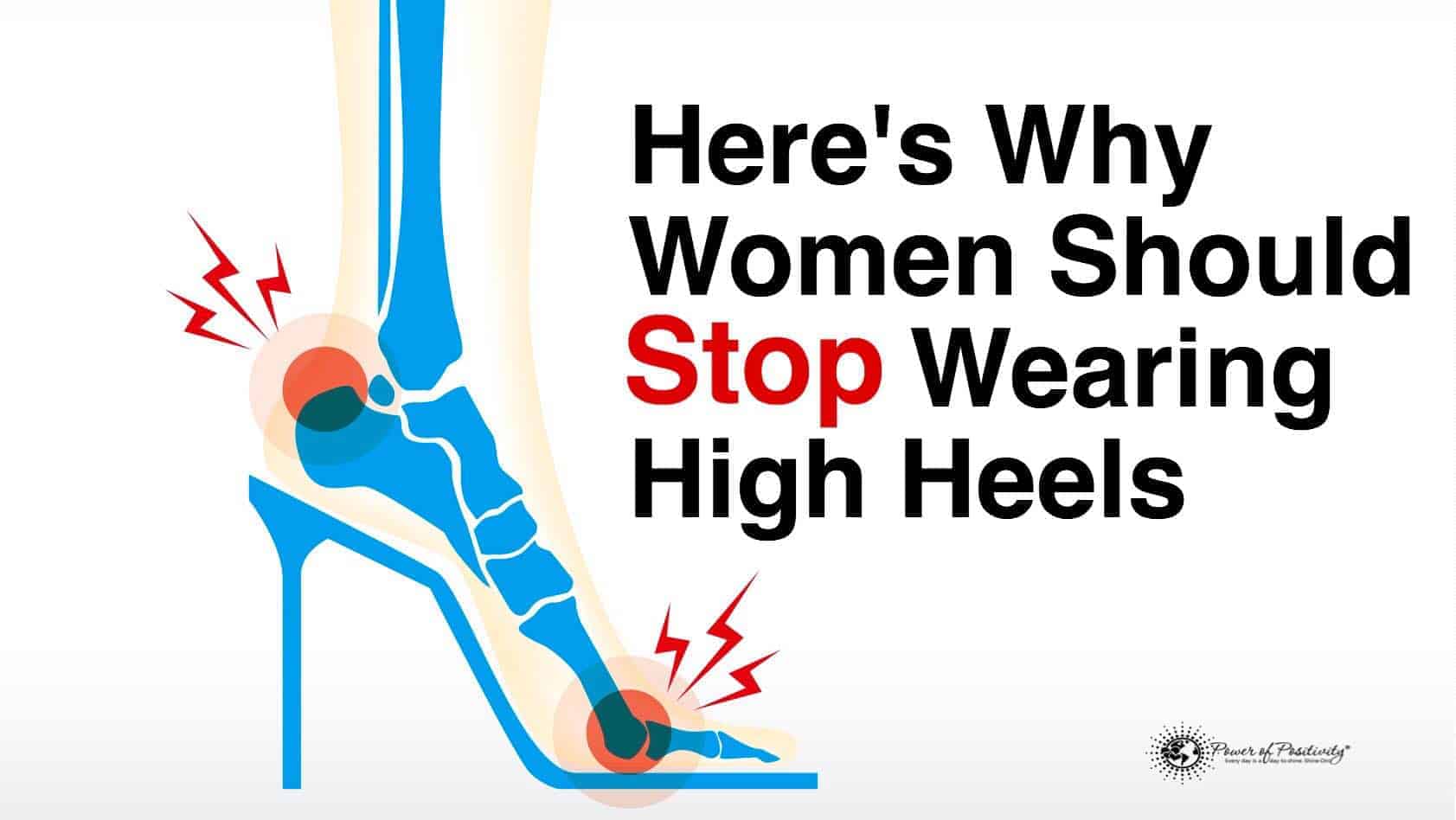Do you battle unsightly and painful calluses on your feet and toes? How would you like to get rid of them naturally at home? All you need is a little bit of bicarbonate soda and milk for a refreshing and healing baking soda foot soak.
The Many Steps of a Single Lifetime
Imagine all the heavy work and abuse your feet have taken your entire life. They bear at least 120 percent of your body weight while standing. Plus they take you most places you need to go. Statistics say that if you live to be 80 years old, you’ve probably walked at least 110,000 miles in your lifetime.
If you do the math, that means your feet will have carried you the distance around the earth’s equator five times. No wonder your humble feet and toes develop painful conditions like calluses, bunions, and corns. How do they stand up to such a workout?
Anatomy of Your Foot
Your foot looks basic with the heel, ankle, arch, ball, and toes. However, they are a complicated body part containing 100 muscles combined with ligaments, tendons, 30 joints, and 26 bones. The five toes on each foot help with balance and mobility.
Did you know that the skin on the soles of your feet is the thickest on your body? It has no oil glands nor hair follicles. However, your feet have your body’s greatest concentration of sweat glands to keep them cool while walking. As you get older and from years of walking, your soles tend to get thicker skin.
How Calluses Form
Like other skin areas on your body, your foot is constantly shedding dead skin cells and replacing them. You don’t have oil glands at the bottom of your feet, so it can often get dry, itchy, and produce painful cracks. Since feet can sweat a lot, they are prone to fungal and bacterial infections unless they are kept clean and dry.
Your skin has a unique way of defending itself, especially on your feet. When a spot on your skin is continuously rubbed and irritated, it produces extra skin cells to create a rigid, protective barrier. These are commonly called calluses.
Why are your feet more apt to develop calluses? Consider the shoes you wear for the answer. If you wear tight-fitting shoes that pinch and rub, it’s no wonder that you have painful calluses. If you do a lot of walking and don’t keep your feet moisturized, you can also see more calluses than usual.
How to Treat Calluses at Home
Calluses are layers of dead skin that have no feeling and build up to protect living skin. However, they often pressure the underlying skin, causing pain and irritation. You can get them on any areas where there is pressure from walking, specifically the heels, the balls of your feet, and the sides of your toes.
It’s normal to get calluses. In fact, at least 5 percent of Americans develop them each year. Calluses are usually treated with home remedies like a baking soda foot soak. Pampering yourself and taking care of your toes regularly at home saves a trip to the podiatrist.
Of course, prevention is the key to keeping your feet healthy. Wear shoes that fit correctly and take extra care when walking barefoot, especially on heated surfaces or in water. Slather on the moisturizer and gently remove unwanted calluses with a baking soda foot soak.
Baking Soda: A Natural Wonder
Baking soda, also called sodium bicarbonate, is found naturally and can be manufactured. It’s a compound found in a salt called nahcolite. Baking soda’s leavening properties were discovered in 18th-century France by a chemist named Nicholas LeBlanc.
It wasn’t until later in the 19th century that sodium bicarbonate was manufactured in the United States and used extensively to cook, bake, and for medicinal purposes. Scientists later found that it has antimicrobial and antifungal properties, making it an effective natural cleaner and sanitizer.
Using Baking Soda at Home
Who could imagine that the box of baking soda in the pantry could be so handy? Not only is baking soda a staple for baked goods, but you probably keep a box of it in your refrigerator and freezer to eliminate odors.
It’s a gentle abrasive that makes it perfect for cleaning surfaces in your home without scratching them. Here are some other wonderful uses of baking soda.
1. Nature’s Toothpaste
Did you know that many of the products you use for pampering yourself contain baking soda? For years, people used it to brush their teeth and freshen their breath, so it’s often found in commercial toothpaste. It fights the germs that cause tooth decay and gently whitens your teeth without damaging the enamel.
2. Heartburn and Indigestion Relief
When your grandparents got heartburn, they probably mixed a teaspoon of baking soda in a glass of water and drank it for instant relief. Sodium bicarbonate is a salt that quickly neutralizes acid, so you’ll often see it as the main ingredient in tablet and liquid heartburn remedies.
3. Effective Skin Treatment
Baking soda is an inexpensive ingredient to add to your DIY skincare routine. If you have acne, you can dilute a bit of baking soda and use it to treat blemishes. Its mild abrasives can gently exfoliate dead skin cells that clog your pores. It can also absorb excess skin oils that contribute to acne.
4. Feminine Hygiene
A little bit of sodium bicarbonate can be a woman’s best friend. You can add a couple of tablespoons of it to your tub and have a healing soak for feminine hygiene. It helps destroy harmful bacteria that cause itchiness and odor and supports your natural feminine flora.
Baking soda is an antifungal that can soothe and heal yeast infections. Some alternative healthcare providers recommend sodium bicarbonate vaginal suppositories to patients with chronic yeast infections. It works as well or even better than many commercial varieties.
5. Scrub-A-Dub-Dub
Since it has antibacterial properties, baking soda is excellent for bathing water and pampering yourself. It gently cleans and softens your skin without harsh chemicals. A foot soak with baking soda and a splash of milk is just what you need to treat your toes and feet.
6. Milk Baths: Tribute to Cleopatra
According to Ancient Egyptian records, the legendary Queen of the Nile bathed regularly in warm tubs of milk for her self-care. Throughout history, others followed Cleopatra’s lead and discovered how soft and supple milk baths made their skin. When you add it to a foot soak with baking soda, your feet will get double benefits.
The lactic acid found in milk acts as a mild exfoliant, softening rough calluses and dead skin on your feet. It’s also an effective way to hydrate you for smooth, soft, touchable feet. Milk is a cosmetic secret that history’s iconic beauty was glad to share.
How to Make and Use a Baking Soda Foot Soak
Baking soda is a mild base that most people can use safely on their skin. However, you should always dilute the compound with water and never rub it on your skin full-strength. To be on the safe side, try a little diluted solution on a small spot of skin to see if you have any allergic reactions.
• Baking Soda & Milk Foot Bath
You can have too much of a good thing; a baking soda foot soak is one. Limit your soaks to a couple of times a week to avoid skin irritation. Be sure to use baking soda and not washing soda in this solution.
What You Need:
A large plastic or metal basin large enough to soak your feet comfortably
- Enough warm water to fill the basin at least ¾ full
- 1 C. warm milk, or ½ cup powdered milk
- 3 Tbsp. soda
How To:
Mix all ingredients in the foot basin until the soda is dissolved. Put both feet into the mixture and let them soak for at least 20 minutes.
Use a soft, clean towel to dry your feet thoroughly, especially between the toes. Apply a rich moisturizer on both feet and put on a pair of clean cotton socks. Sleep with the socks on overnight for optimal benefits. Doesn’t self-care for your feet feel amazing?
• Treating Calluses with a Baking Soda Foot Soak
After your first baking soda foot soaks, you will notice that your calluses are softer and less painful. Smaller calluses can often be gently peeled by using your fingernails. More extensive, thicker calluses may take a little longer to soften enough to peel.
When you’ve dried your feet after a good soak, you can use a fine pumice stone to sand dry spots gently and calluses. Follow up with a soothing moisturizer, like organic shea butter or coconut oil. Never use a razor blade to cut away a callous; you can damage living skin underneath and cause infection.
Final Thoughts on Treating Your Feet to a Baking Soda Foot Soak
Learn how to love your feet and treat your toes to a baking soda foot soak twice weekly. It will help eliminate irritating calluses and make your feet soft and beautiful. Natural foot care is a fine step in the right direction.
















 Community
Community

